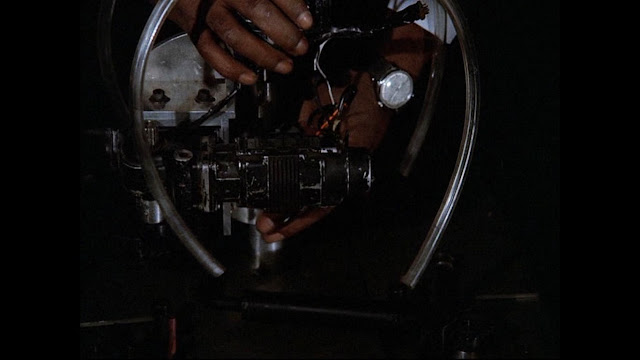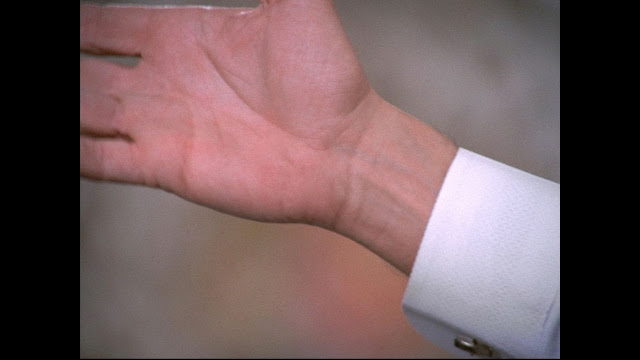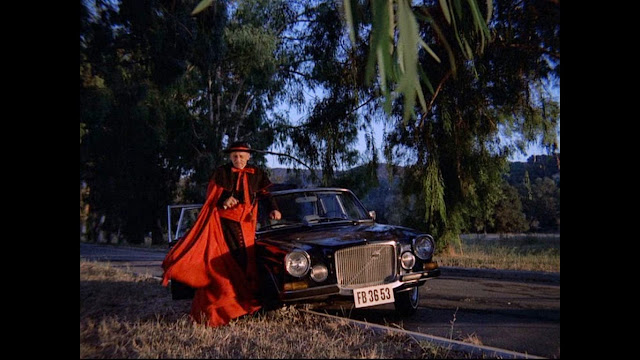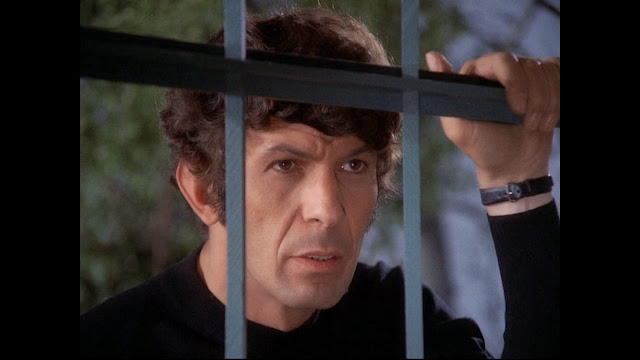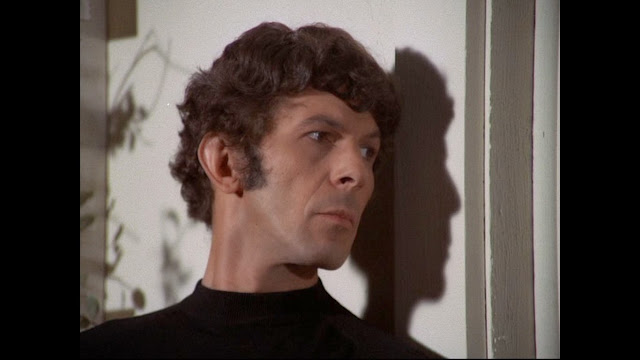SST Death Flight. Dear god, what a journey... [This article will contain MAJOR SPOILERS]
You'd think the poster says it all. Concorde-like plane? Hubris? Crash? But no. No, the poster does not prepare us for this roller-coaster ride of a disaster movie.
This is a gloriously schlocky film full of recognisable names. Peter
Graves is the one we’re interested in, but there’s also Meredith Burgess
(Batman’s The Penguin); Martin Milner and George Maharis back in the
same production for the first time since Route 66 in the early 60s,
although they’re not seen on screen together; John de Lancie before he
became more well known as Q in various incarnations of Star Trek;
Barbara Anderson, who was seen both in a few episodes of Mission:
Impossible and in one of Star Trek; Robert Ito, who played Sam in
Quincy; Brock Peters, a notable figure in both Star Trek films and
Sisko’s father in Star Trek: Deep Space Nine; Lorne Greene (Ben
Cartwright of Bonanza); Doug McClure of The Virginian.
I'm guessing the look on most of these faces is the look they had when they looked at the script, but decided a paycheck is still a paycheck.
Peter Graves’ character, Paul Whitely, is the old flame of a woman
who has won a trip to Paris on this new supersonic plane. She is flying
with her new boyfriend (John De Lancie - don't we always love John De Lancie?), who is both jealous of and
deprecating towards Graves. Graves is an old man, far too old for her, possibly ready for the retirement home, while De Lancie is young, virile, and at some point in the future will presumably evolve into a super-being with a crush on Jean Luc Picard. Who wouldn't want him? Well, like Q in Star Trek, he's also an arrogant cock, and put alongside Graves' gentle humility, Graves wins every time.

Look how young and fresh faced De Lancie is, here alongside Season Hubley. Sorry about the huge Getty watermark. My copy of this film is so blurry there's no point in screencaps. Luckily it's available on Amazon Prime, still not in great quality, but better, although with atrocious subtitles which, for example, renames one of France's most famous airports, De Gaulle, as 'Goal', and occasionally Dulles as 'dull as'. There are worse examples, but I can't pull them to mind. This film has broken me.

This is what we're here for, of course. Look, you've got John De Lancie on the one hand acting like a pouting little boy, and you've got Peter Graves on the other, mature, blue-eyed, dapper, and the head of a company, no less. If you were Season Hubley, what would you choose? He was her love of a lifetime, and she left him because he was too old, but fate has given her the chance to make things right. It's as if Sam Beckett had leaped into that plane and made him board (without knowledge of the disaster about to unfold.) He's only in his early 50s, for god's sake. Is that really too old?
Graves doesn’t appear a lot on screen in this film, sadly. He does his best with what he's given, poor love, and his segments are acted nicely but not with any particular verve as a person
who regrets losing this young, attractive woman to another man. By the
end of the film his stable character has succeeded in wooing the old
girlfriend back, as De Lancie’s character becomes increasingly petulant
and unattractive as the crisis unfolds. In the course of events, De Lancie jealously punched Graves in the face, which is never, never a way to win a woman back from her old love.
_Press_Photo_of_Robert_Ito.jpg)
Let's take a moment to appreciate two wonderful appearances, George Maharis as a dastardly saboteur, acting with face-wobbling brilliance, god rest his soul. I love George Maharis but when he gets worked up he does wobble his face a lot, and there's nothing that makes a person more wobbly than sabotaging a plane's hydraulic's system then discovering the stubborn captain won't turn back to safety, and instead is going to carry on flying everyone to their deaths.
Then there's Robert Ito, who everyone has to love. Who couldn't love Sam from Quincy? He doesn't have a huge role in the film, which is why his photo is a still from Quincy, but he looks lovely in his flight uniform. He is the flight engineer, and you would think he'd need a lot of screen time as he tries to stop the plane hurtling to its doom. Sadly he has a few lines, sits in the background of cockpit scenes, and then blows himself and the treacherous Maharis up while trying to fix the sabotage. We're not sure why the detergent Maharis put in the hydraulic system was so flammable, but apparently it was. Nobody really tried to assess what had happened to the two of them after the fire, so I think we have to assume they were blown up, then fried, then frozen as they were sucked out of the decompressing aeroplane at altitude. We don't feel too sorry for Maharis' character, but it's a shame for Ito.
Sadly for Graves’ character of Paul Whitely, the plane was not only struck by sabotage, but, ridiculously, by the catastrophic release of a flu strain with a 30% mortality rate, brought onto the plane by Brock Peters, as a wonderfully level-headed doctor. I mean, why wouldn't you put a high-mortality flu sample onto an aeroplane with over 100 people on board? Poor Graves is one of the first to succumb. Hurtling towards their doom, with the plan to replace the fluid in the sabotaged hydraulics system with drinking water for just long enough to land, no airport but London will take the plague-ridden plane.
Could Getty not do better than this? No, apparently not. One handsome headshot, and two dying-of-flu photos. Post-covid, perhaps this story has a little more sting.
Eventually the passengers vote to risk the extra distance to Senegal, where the flu originated, in order to not risk the population of London. The population of Senegal will be just fine, because they've already been exposed. Almost inevitably the plane falls a little short, crashing in a part of Senegal that looks surprisingly like the dry hills around LA in the United States.
The arid mountain wastes of southern California *ahem* Senegal. I've looked at a few photos of Senegal, and it doesn't look startlingly similar to southern California.
Some passengers survive the crash and some don’t. I don't understand how this happens, in the film world where even the humblest of cars will burst into a blazing fireball on crashing. There doesn't appear to have been any kind of fire, perhaps because the plane ran out of fuel. Post crash, very few seem to be afflicted by the massively contagious and fast-developing flu at this point, either. They don't even seem particularly injured by the crash. Luckily the Senegalese rescuers have all been hand picked as people who have already survived the illness, and they will take the crash survivors to quarantine. Dazed and dirtied, Whitely’s old flame is found by De Lancie’s character, and she indicates that Paul Whitely is one of the bodies in the row of dead under blankets on the ground. Did he succumb to the flu or the crash? I suppose we’ll never know. I imagine at this point in the filming, Peter Graves was happily sitting at home checking that the pay cheque cleared.
This is the face of a woman who has rekindled her love for Peter Graves during the worst flight of her life, been proposed to by him, accepted, then lost him simultaneously to flu and sudden impact with the ground. All she has left is De Lancie and his petty jealousies. She must be wondering why god has forsaken her.
A quick shout-out to a couple of other appearances in the film. Firstly Barbara Anderson, who did well in a few episodes of Mission: Impossible, but here, sadly, is a reporter who turns into something akin to wet tissue paper in a gale when things go wrong. She was not made for emergency situations.
This is not the best photo of Barbara Anderson. Go and watch her in Mission: Impossible, or as a rather irritating insane daughter of King Lear aka Kodos the Executioner, in Star Trek.
Then there's Martin Milner who is, essentially, Martin Milner. Stolid, sensible, ridiculously optimistic, and a little bit annoying. Here he is in the photo below, wondering why he ever left that corvette behind.
Lastly, kudos goes out to Misty Rowe for her ditsy but heartfelt performance as a unexpectedly pregnant model with a flakey boyfriend. Apparently she once played Marilyn Monroe, and I can see how she'd do well in that part. She provides a bit of seriousness and a bit of comic relief, but, since it's the 70s, what she also provides is Unexpected Breasts. Getty, unfortunately, doesn't choose to showcase this part of the film, but there you are, happily watching and waiting for the drama to unfold, when suddenly there Misty is, getting changed from her sparking gold dress into a rather floppy brown one, when her boyfriend comes down to see her, and suddenly there are Breasts Everywhere. As far as breasts go, these seem to be good ones, but I get the feeling they were really put in there for the boys. And girls, and non-binaries, but I expect they were only thinking of the boys. If you're curious, put 'Misty Rowe nude' into Google, and like magic, they will appear (as will hardcore porn, so be careful).

In conclusion, the film is worth watching for the array of middle-budget names and for the ludicrous plot, if nothing else. We've just finished a run of watching the amazing 1970s Airport films (which can get ridiculous but also stick pretty well to technical realities and physics - we'll pretend the sinking intact of an entire 747 didn't happen). We also snuck in the Peter Graves Airplane films. This marvellous piece of utter rubbish at least shows off the skill of those other films, by comparison.





_Press_Photo_of_Robert_Ito.jpg)


















































































